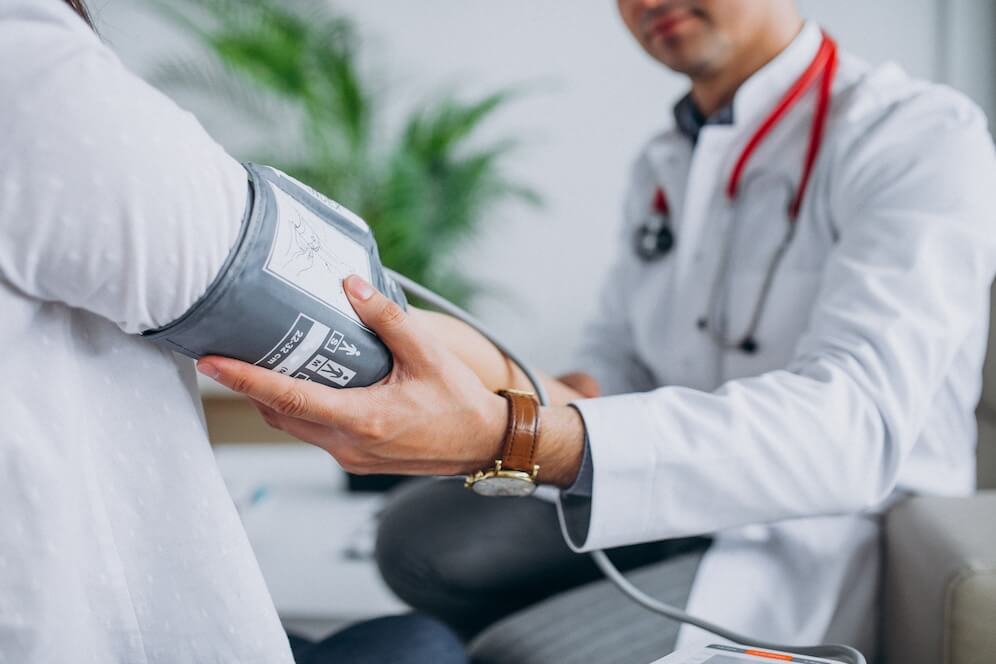Follow-up for chronic disease patients is a vital element of long-term healthcare. Whether managing diabetes, heart disease, or hypertension, consistent check-ins help monitor progress, adjust treatments, and prevent complications. At River NIMS Hospitals, we’re helping patients make the right choice between virtual and in-person follow-up care.
Each mode of care has benefits, but deciding which one suits your condition requires careful consideration.
🔍 Why Follow-Up Is Crucial in Chronic Disease Management
Chronic conditions are long-lasting and often require continuous attention. Without proper follow-up, patients can experience worsening symptoms, treatment failure, or unnecessary hospitalizations.
Effective follow-up helps in:
- Adjusting medications
- Tracking symptom progression
- Identifying complications early
- Motivating lifestyle compliance
- Building trust between doctors and patients
Clearly, the follow-up method chosen can influence outcomes significantly.
💻 What Is Virtual Follow-Up?
Virtual follow-up allows patients to consult their doctors using digital means—such as video calls, phone consultations, or secure messaging platforms. It has become increasingly popular due to its convenience and safety, particularly after the pandemic.
✅ Advantages of Virtual Follow-Up
1. Convenient Access to Specialists
Patients can reach their doctors without traveling, which is especially useful for elderly or immobile individuals.
2. Saves Time and Energy
Virtual visits reduce travel, waiting time, and fatigue, especially for those living in rural areas.
3. Cost Efficiency
With no travel or associated expenses, patients save both time and money.
4. Timely Intervention
Quick check-ins can be arranged easily, helping detect issues early.
5. Ongoing Monitoring
Doctors can monitor patient-reported symptoms, test reports, and even vitals via apps and wearables.
While virtual care is a boon, it does come with limitations.
⚠️ Challenges of Virtual Follow-Up
Although virtual consultations are practical, they don’t replace all in-person benefits.
- Physical Examination Is Limited
Doctors can’t palpate, auscultate, or observe non-verbal signs as effectively. - Technology Barriers Exist
Not all patients are comfortable using smartphones or video platforms. - Inaccurate Self-Reporting
Some patients may underreport or misinterpret symptoms. - Diagnostic Limitations
Blood tests, imaging, and scans must still be done at a facility.
Clearly, virtual care is best for stable patients and routine check-ins—not emergencies or diagnostic evaluations.


🏥 Benefits of In-Person Follow-Up
In-person visits remain essential for many chronic disease patients. These are especially beneficial when:
- Symptoms have worsened
- New symptoms arise
- Diagnostic tests are required
- The patient has multiple health concerns
1. Comprehensive Evaluation
Doctors can observe your gait, skin tone, reflexes, or breathing in a way digital tools cannot replicate.
2. Immediate Diagnostics
Tests like ECG, X-rays, or lab work can be conducted during the visit.
3. Emotional Reassurance
Face-to-face conversations help build trust and reduce anxiety in patients.
4. Better Communication
For some patients—especially the elderly—verbal and non-verbal cues are better understood in person.
🔄 Introducing Hybrid Care: Best of Both Worlds
At River NIMS Hospitals, we often recommend a hybrid follow-up model, balancing virtual and in-person visits. For example:
- Diabetes patients may use virtual consultations to discuss sugar levels and diet but come in every quarter for blood work.
- Cardiac patients can do virtual medication reviews but need physical exams for ECG and echocardiography.
- Asthma patients may benefit from virtual follow-ups during stable phases but require in-person checks during exacerbations.
This model ensures safety, cost-efficiency, and thorough clinical evaluation.
👨⚕️ Real Patient Story: Mrs. Lakshmi’s Hypertension Follow-Up
Mrs. Lakshmi, 62, was diagnosed with hypertension and mild kidney dysfunction. Her initial management involved in-person assessments and blood work. Once her blood pressure stabilized, follow-ups were shifted to monthly video calls. Every three months, she returned for full lab tests and medication adjustments. This balance saved her frequent trips while maintaining medical safety.
📅 When to Choose Virtual vs. In-Person Care
Virtual Care is Ideal When:
- Your condition is stable
- You need prescription renewal
- You have minor symptom changes
- You live in a remote area
- You’re familiar with using digital tools
In-Person Care is Necessary When:
- There are new or severe symptoms
- You require physical examination
- Diagnostic procedures are needed
- Mental health symptoms are involved
- Communication over virtual tools is difficult
Choosing wisely ensures better outcomes and greater patient satisfaction.
🌟 River NIMS Hospitals: Personalizing Your Follow-Up Plan
At River NIMS Hospitals, we don’t believe in a “one-size-fits-all” approach. Instead, we create personalized follow-up schedules based on:
- Your diagnosis
- Medical history
- Age and mobility
- Digital access and comfort level
- Lifestyle and risk factors
Our team ensures patients get timely reminders, access to virtual platforms, and dedicated support for both in-person and online visits.
🧠 Final Thoughts: Smarter Follow-Ups, Healthier Lives
The debate between virtual and in-person follow-up for chronic disease patients is not about which is better—it’s about what works best for you.
Both formats are valuable. Virtual visits improve accessibility and consistency, while in-person evaluations deliver depth and accuracy. The smartest strategy is a customized care plan that combines both methods based on your evolving health needs.
Trust River NIMS Hospitals to walk that journey with you—safely, smartly, and supportively.



